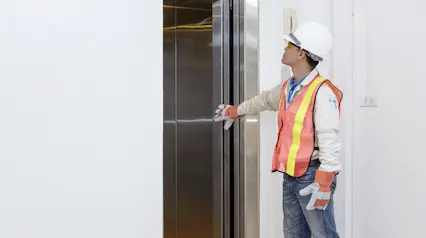Lift Modernization Services-- Overhaul Your Lifts with Cutting-Edge Technology
Lift Modernization Services-- Overhaul Your Lifts with Cutting-Edge Technology
Blog Article
Repairing Tips for Common Issues With Handicapped System Lifts
When it comes to making certain the smooth operation of impaired system lifts, encountering usual issues can interfere with the functionality and availability they provide. Let's explore some functional pointers to attend to these usual troubles and ensure the appropriate performance of disabled system lifts.
Power Supply Issues
When encountering power supply problems with disabled system lifts, the primary step is to systematically examine and troubleshoot potential resources of power disturbance. Begin by examining the power source to guarantee it is securely attached and operating appropriately. Confirm that the power outlet is operational by examining it with an additional gadget. If the source of power is confirmed to be working, continue to inspect the power cable for any type of signs of damages or put on that might be causing a disruption in the power supply.

Control Board Issues
Control panel breakdowns on handicapped system lifts can significantly restrain their functional performance and posture security risks to users. The control panel works as the main user interface for running the lift, permitting users to start motion, control speed, and handle stops at different levels. When the control board runs into concerns such as unresponsive switches, irregular habits, or display malfunctions, it can interfere with the whole lift operation.
One usual trouble with control panels is electrical mistakes, which might arise from circuitry issues, power surges, or part damage. These mistakes can trigger the control board to malfunction or end up being unresponsive, making it tough for users to operate the lift securely. Furthermore, ecological aspects like wetness or severe temperature levels can likewise influence the control panel's performance, causing possible failings.
To deal with control board problems efficiently, routine upkeep checks and examinations are vital. Consistently cleaning up the control panel, examining wiring links, and guaranteeing proper calibration can aid prevent malfunctions and make certain the lift operates smoothly. In situations of consistent problems, consulting a qualified specialist for fixings or replacements is suggested to keep the lift's functionality and safety for users.

System Stuck or Jammed
In circumstances where the handicapped platform lift experiences a platform stuck or obstructed, instant attention and proper troubleshooting are critical to ensure the lift's functionality and user safety. When encountering a system that is stuck or jammed, the very first step is to quit any kind of ongoing operation of the lift to stop more damage or safety risks.
In such instances, it is recommended to call a certified technician or the lift maker for expert support in settling the concern. Trigger and proper resolution of a stuck or jammed system is important to keep the lift's functional efficiency and guarantee individual safety and security.
Security Sensor Malfunctions
A vital element of disabled platform lifts, safety sensing units play an essential duty in guaranteeing customer security and lift procedure. If repairing the sensing units does not resolve the concern, get in touch my company with a certified specialist to carry out an extensive assessment and repair to maintain the lift's safety and functionality. Regular maintenance and prompt resolution of safety and security sensor malfunctions are vital for the risk-free operation of disabled system lifts.
Unusual Noises or Movements
When running a disabled platform lift, being mindful to any uncommon sounds or activities is essential for determining prospective problems that may affect its performance and safety. Unusual noises, such as grinding, screeching, or clunking noises, might indicate problems with the lift's mechanical parts, such as worn-out equipments, loose screws, or damaged bearings. These issues, if left unaddressed, might lead to malfunctions and even total failure of the lift.
Likewise, uncommon movements of the platform, such as jerking, drinking, or unanticipated stops, should not be disregarded (lift servicing near me). These movements can be a sign of electrical concerns, my company hydraulic system troubles, or irregularities in the lift's shows. Quickly examining and resolving these unusual activities can stop mishaps and ensure the ongoing safe operation of the platform lift
In you can try this out case of experiencing uncommon noises or activities, it is a good idea to discontinue using the lift instantly and contact a certified specialist for examination and repairs. Regular upkeep and prompt troubleshooting of any kind of uncommon indicators can assist extend the life-span of the disabled platform lift and make sure the safety and security of its users.
Verdict
To conclude, fixing common concerns with handicapped system lifts requires determining and attending to power supply problems, control board problems, system jams, safety and security sensor breakdowns, and unusual noises or motions. By adhering to correct maintenance and fixing procedures, individuals can make sure the secure and reliable procedure of platform lifts for people with disabilities.
Report this page